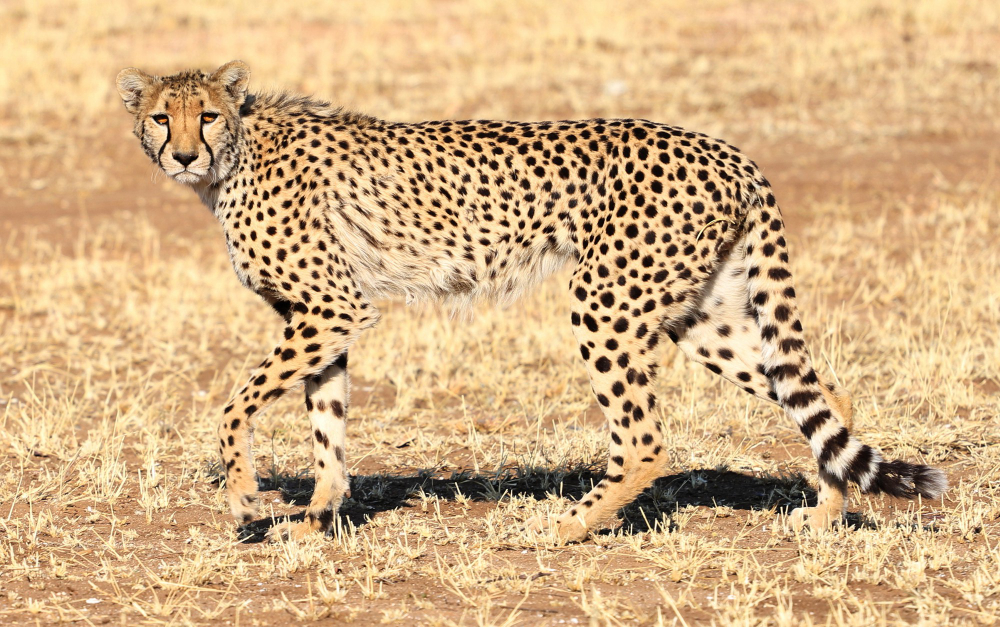
When we think of speed in the animal kingdom, one creature stands out above all others—the cheetah. Renowned for its remarkable speed and graceful agility, the cheetah is an awe-inspiring predator that has captured the imagination of humans for centuries. In this article, we will delve into the astonishing speed of cheetahs, exploring the fascinating adaptations that enable them to achieve such unparalleled velocity and uncover the secrets behind their lightning-fast sprints.
Built for Speed: Anatomy and Physiology
The cheetah’s speed prowess begins with its physical adaptations, finely tuned over millions of years of evolution. Its slender and elongated body, long tail for balance, and non-retractable claws for better traction are just a few of the features that make it an exceptional sprinter. Its spine is incredibly flexible, acting like a coiled spring, and its large nasal passages enhance oxygen intake during high-speed chases. These remarkable adaptations collectively contribute to the cheetah’s unmatched speed and agility.
Majestic Muscles: The Engine Behind the Speed
The cheetah’s muscular system plays a pivotal role in its lightning-fast sprints. Its leg muscles are powerhouses designed for explosive acceleration, enabling it to reach incredible speeds in just a few strides. During a chase, the cheetah’s muscles contract and release with remarkable efficiency, allowing it to cover ground at an astonishing pace, leaving even the fastest human sprinters in the dust.
The Thrill of the Chase: Hunting Strategies Unleashed
Cheetahs are precision hunters, relying on strategy and stealth to catch their prey. They use their exceptional vision to spot potential targets from afar, honing in on vulnerable individuals within a herd. Once locked on, the cheetah employs incredible bursts of speed, reaching up to 60 to 70 miles per hour (97 to 113 km/h) in just a few seconds, to close the gap and launch its attack. The element of surprise, combined with its lightning-quick acceleration, gives the cheetah a distinct advantage in the hunt.
The Need for Speed: Survival of the Fastest
In the unforgiving savannas of Africa, speed is not just a trait; it is a matter of survival for cheetahs. Their main prey, such as gazelles and impalas, are swift and agile, and the cheetah’s speed is essential for securing a successful kill. However, their need for speed comes at a cost. Cheetahs expend an immense amount of energy during hunts, and their bodies can overheat rapidly. To avoid exhaustion, cheetahs limit their sprints to short bursts of 20 to 30 seconds, making every chase a high-stakes race against time.
A Delicate Ecosystem Balance: Predator and Prey
In the intricate dance of the African savanna, the cheetah’s speed is a critical factor in maintaining the balance of the ecosystem. By preying primarily on weaker or sick individuals within herds, cheetahs contribute to the natural selection process, ensuring the overall health and resilience of their prey populations. As apex predators, cheetahs play a vital role in regulating herbivore populations, ultimately shaping the dynamics of their entire ecosystem.
Human-Cheetah Encounters: A Fascination with Speed
For millennia, humans have been captivated by the cheetah’s speed and elegance. Ancient civilizations depicted these majestic creatures in art and mythology, celebrating their unmatched abilities. Today, wildlife enthusiasts and researchers continue to be enamored by cheetahs, studying their every move to unlock the secrets of their remarkable speed. Eco-tourism and conservation efforts have allowed people to witness the beauty of cheetahs in their natural habitat, fostering a deeper connection with these mesmerizing animals.
Preserving the Speedsters: Conservation Challenges
Despite their incredible adaptations and unmatched speed, cheetahs face numerous threats in the modern world. Habitat loss, human-wildlife conflict, and poaching are putting immense pressure on their populations. The cheetah’s low genetic diversity also makes them vulnerable to disease and environmental changes. Conservation efforts are crucial to ensuring the survival of these magnificent creatures, allowing future generations to continue to marvel at their astonishing speed.
In the Blink of an Eye: The Essence of Cheetah Speed
In conclusion, the cheetah’s astonishing speed is a testament to the wonders of nature and the remarkable adaptations that have shaped this magnificent predator over millions of years. From its graceful form to its powerful muscles and strategic hunting prowess, the cheetah embodies the epitome of speed in the animal kingdom. As we continue to learn about and admire these majestic creatures, let us also be advocates for their preservation and conservation, ensuring that the speed demons of the savanna continue to grace our world with their presence and unparalleled swiftness.


